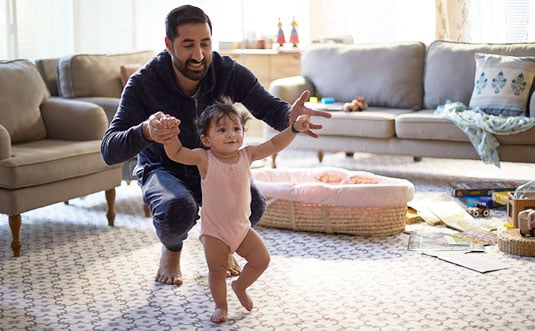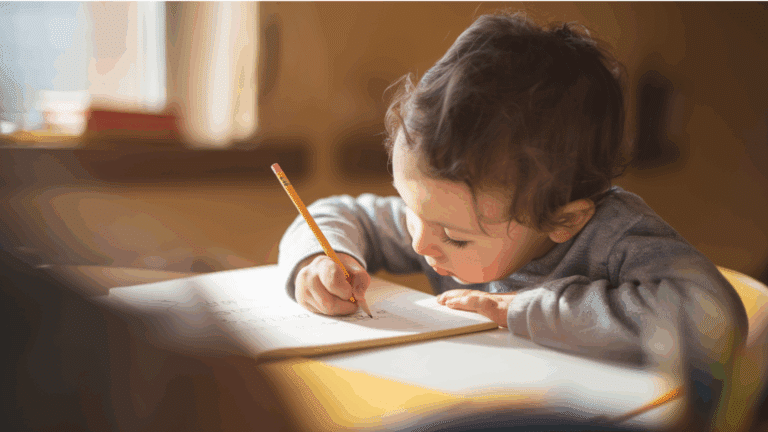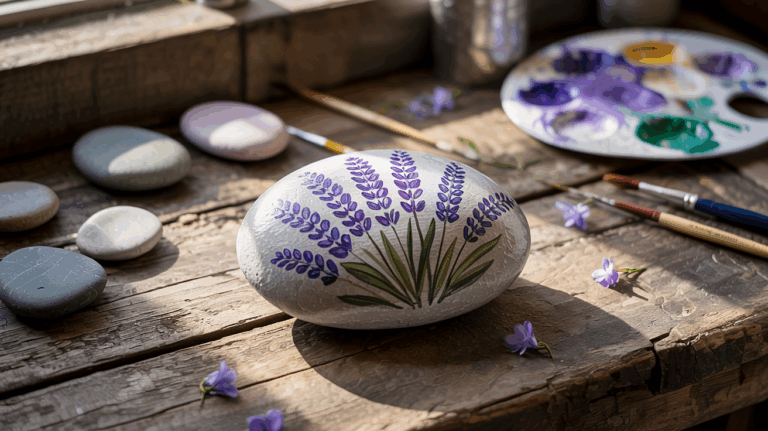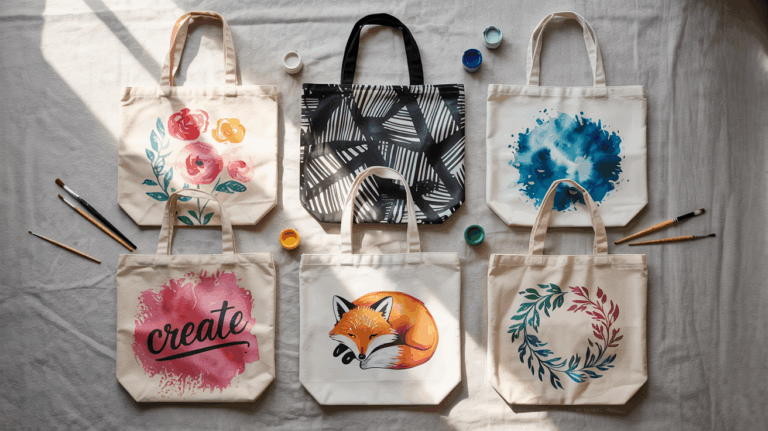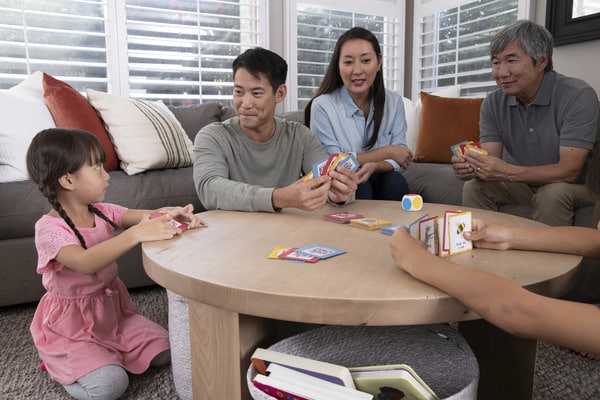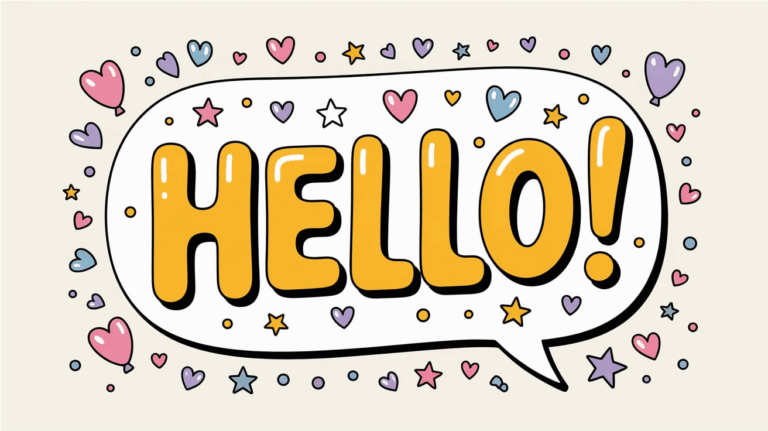Babies are weird. At 3 months old, they can’t even roll over consistently, yet they demand to be entertained all day long.
If you’re trapped under a sleeping infant who turns into a fussy monster the minute you put them down, we feel your pain. Those early months can be lonely, boring, and honestly, pretty tough.
But here’s some good news – entertaining a 3-month-old doesn’t require fancy toys or complicated setups. You don’t need to spend a fortune or be a child development expert.
We’ve collected simple activities that actually work for how to entertain a 3-month-old real baby and real parents.
These ideas will help you fill your days, boost your baby’s brain growth, and maybe even give you a few moments when your arms are free. Let’s make those long baby days a bit more fun!
Understanding Development at 3 Months
At 3 months old, your baby is growing and learning in many exciting ways. This is an important time for their brain and body development.
At this stage, babies start to focus better on objects, especially faces, and can follow things with their eyes. They also begin to smile and show emotions like happiness and excitement.
Physically, your baby is getting stronger, and you’ll notice them trying to lift their head and chest during tummy time.
They may even start to reach for toys or your fingers, which helps with their hand-eye coordination.
This time is also important for language development. Even though your baby can’t talk yet, they are listening to your voice and learning from the sounds they hear. Talking and singing to your baby can help them develop their language skills.
Understanding these milestones can help you provide activities that match your baby’s developmental stage, encouraging learning and growth through play.
Playtime That Sparks Joy: Fun Activities for Your 3-Month-Old

Check out fun and engaging activities to learn how to entertain a 3-month-old and stimulate their development.
From tummy time to sensory play, these simple games will spark joy and support your baby’s growth.
1. Tummy Time
- How to Play: Lay your baby on their tummy on a soft surface like a play mat or blanket. Stay close to encourage them to lift their head and look around. You can place toys in front of them to motivate them to reach and hold their head up for longer periods.
- What You Need: A soft, safe play mat, colorful toys, or mirrors to encourage reaching and focusing.
2. Mirror Play
- How to Play: Place a baby-safe mirror in front of your baby during tummy time or when they are lying on their back. Make faces, smile, and talk to them to engage their attention. Let them look at their own reflection, which helps them start recognizing themselves.
- What You Need: A baby-safe mirror (unbreakable and smooth edges).
3. Gentle Bouncing
- How to Play: Hold your baby securely with one hand supporting their head and the other under their body. Gently bounce them up and down in your arms, keeping the movements soft and soothing. This activity helps develop their balance and motor skills.
- What You Need: A comfortable and soft space for you to hold and bounce your baby safely.
4. Peekaboo
- How to Play: Hide your face behind your hands, a cloth, or another object, then reveal it with a big smile while saying “peekaboo!” Repeat the game as your baby giggles or looks intrigued. This helps them understand object permanence.
- What You Need: A soft cloth, your hands, or any object to cover your face.
5. Sing to Your Baby
- How to Play: Sing soft songs or nursery rhymes to your baby. Sing slowly and clearly, making eye contact and smiling as you sing. Your baby will enjoy hearing your voice and may try to coo or mimic sounds.
- What You Need: Your voice and a calm, quiet environment.
6. High-Contrast Toys and Cards
- How to Play: Hold high-contrast cards or toys (such as black-and-white or bold color patterns) in front of your baby. Move them slowly from side to side or up and down, allowing your baby to focus and follow the movement.
- What You Need: High-contrast toys or flashcards in bold, simple patterns.
7. Talking and Responding
- How to Play: When your baby coos, babbles, or makes sounds, respond by talking back to them. Imitate their sounds and speak in a clear, engaging way. This encourages language development and strengthens the bond between you.
- What You Need: Your voice, patience, and eye contact.
8. Gentle Hand Clapping
- How to Play: Gently take your baby’s hands and clap them together softly. You can also clap your hands alongside them to introduce rhythm. This helps with motor skills and hand-eye coordination.
- What You Need: Your hands and your baby’s hands.
9. Soft Rattles
- How to Play: Hold a soft rattle or toy in front of your baby, gently shaking it to capture their attention. Let them reach out to grab it, encouraging hand-eye coordination. This also promotes their grasping reflex.
- What You Need: A soft, safe rattle or toy.
10. Playing with Baby-Safe Soft Books
- How to Play: Introduce soft, fabric books with bright pictures. While showing the pages, you can describe the images to your baby or even make sounds related to the pictures. This promotes cognitive development and visual tracking.
- What You Need: Soft fabric or board books with vibrant images and textures.
11. Tummy Time with Reaching
- How to Play: While your baby is on their tummy, place a toy just within their reach to encourage them to stretch out and grab it. This strengthens their arm and neck muscles and promotes motor skills.
- What You Need: Colorful, easy-to-grab toys placed a little out of reach.
12. Floor Play on a Play Mat
- How to Play: Lay your baby on a soft play mat that has hanging toys. Encourage them to kick their legs or reach for the toys. This promotes muscle strengthening and helps develop coordination.
- What You Need: A soft baby activity mat with hanging toys or other stimulating items.
13. Watching Mobile Play
- How to Play: Place your baby under a colorful mobile, letting them focus on the movement and vibrant colors. You can talk to them about what they’re seeing to stimulate their attention and tracking skills.
- What You Need: A colorful baby mobile with moving elements.
14. Squeeze Toys
- How to Play: Give your baby soft, squeezable toys to hold. Gently encourage them to squeeze or shake the toys, which helps with motor skills and strengthens their hand muscles.
- What You Need: Soft, squeezable toys that are easy for babies to grip.
15. Dancing with Your Baby
- How to Play: Hold your baby securely in your arms and sway or dance gently to soft or fun music. The rhythmic movement helps with balance and coordination while providing a fun bonding experience.
- What You Need: A comfortable space and some calming or rhythmic music.
16. Sound-Making Toys
- How to Play: Place toys that make gentle sounds (such as a rattle, bell, or crinkly fabric) in front of your baby. Shake or tap the toys to grab their attention, encouraging them to reach and explore.
- What You Need: Safe, sound-making toys like rattles, crinkle toys, or bells.
17. Foot and Leg Movement
- How to Play: While your baby is lying on their back, gently hold their feet and move their legs in a pedaling motion, like riding a bicycle. This activity strengthens their legs and helps with coordination.
- What You Need: No equipment is needed, just a soft surface and your hands to guide their leg movements.
Building a Baby-Friendly Routine: Keep Your Little One Engaged All Day

Creating a simple routine for your 3-month-old helps them feel secure, happy, and engaged. A consistent daily schedule supports their growth and development while making your day easier to manage.
Why a Routine is Important
A structured routine helps your baby get into good habits, like feeding, sleeping, and playing. It also supports their physical, emotional, and mental development.
How to Build a Baby-Friendly Routine
- Regular Feedings: Feed your baby every 3 to 4 hours to keep them full and satisfied.
- Tummy Time: Include tummy time to strengthen your baby’s neck and back muscles. Start with a few minutes and gradually increase.
- Nap Time: Babies need 3 to 4 naps a day. Watch for sleep cues to know when it’s time for a nap.
- Engaging Playtime: Keep play sessions short (15-20 minutes) with activities like singing, talking, or showing colorful toys.
- Bonding Time: Spend quality time holding, talking, and making eye contact to foster emotional development.
- Bedtime Routine: Establish a calm bedtime routine with a bath or lullaby to help your baby wind down.
Overcoming Baby Playtime Hurdles: Common Challenges
While playtime is a fun and important part of your baby’s development, it can come with some challenges.
Understanding these common hurdles and knowing how to handle them will help you make playtime more enjoyable and beneficial for both you and your little one.
1. Baby Gets Overstimulated
Challenge: Your baby might get fussy or cranky if there’s too much going on during playtime.
Solution: Keep play sessions short and calm. Focus on one activity at a time and be mindful of your baby’s cues. If they seem overwhelmed, give them a break or transition to a quieter activity like cuddling or gentle rocking.
2. Difficulty with Tummy Time
Challenge: Some babies dislike tummy time and may cry or struggle.
Solution: Start with short tummy time sessions (2-3 minutes) and gradually increase the duration. Use toys or mirrors to make tummy time more engaging. Lying on your chest during tummy time can also help your baby feel comforted.
3. Lack of Interest in Toys
Challenge: Your baby may lose interest in toys quickly, making playtime less fun.
Solution: Rotate the toys to keep things fresh and exciting. Use high-contrast toys for visual stimulation or simple toys that make noise to engage your baby’s senses. It can also help to play alongside them or use toys that require interaction, like rattles or soft books.
4. Baby is Too Sleepy for Playtime
Challenge: Your baby might be too tired to engage in play, leading to fussiness or a short attention span.
Solution: Pay attention to your baby’s sleep cues. Try to schedule playtime after a nap or when they’re awake and alert. If your baby seems too sleepy, focus on calming activities or let them rest before trying to play again.
5. Balancing Playtime with Other Responsibilities
Challenge: It can be tough to find time for play when you’re balancing other tasks, like cooking or cleaning.
Solution: Incorporate play into your routine, like singing or talking to your baby while you do household chores. Use baby gear like swings or bouncers that allow safe, interactive play while giving you a break.
6. Baby is Crying or Fussing During Play
Challenge: Babies sometimes cry or fuss during playtime due to hunger, discomfort, or overstimulation.
Solution: Check if your baby is hungry, needs a diaper change, or is feeling uncomfortable. If they’re overstimulated, give them a break with a quiet activity, like cuddling or playing with soft toys.
The Bottom Line
Looking back at everything we’ve covered, keeping a 3-month-old happy involves more than just toys. It’s about creating moments that build their growing brain and strengthen your bond.
Remember, at this age, you’re your baby’s favorite toy! Simple activities like talking, singing, and making faces offer just the right mental challenge without going overboard.
What’s next? Try one or two new activities from this list each day. Notice which ones make your baby smile the most. Then add these winners to your daily routine.
Looking for more ideas? Leave a comment below with your baby’s favorite activities. Other parents might find your suggestions helpful for their little ones, too!

